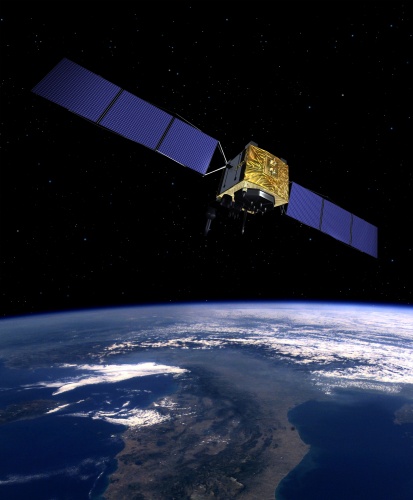
Led by Matteo Clerici at Glasgow University’s James Watt School of Engineering, the team of researchers from the UK, Japan and Germany are said to have demonstrated a new method of generating and detecting quantum-entangled photons at a wavelength of 2.1μm. Their results are published in Science Advances.
UK’s quantum innovations outlined in new report
The unique, non-classical properties of entangled photons are used in applications including quantum key distribution, which makes uncrackable communications between two parties possible.
According to Glasgow University, methods of entangling photons at shorter wavelengths of between 700 and 1550nm are well-established, but those wavelengths are vulnerable to interference from sunlight when transmitted over open air. This makes them difficult to use in applications including secure satellite-to-ground and satellite-to-satellite communications.
The Glasgow-led team’s new method of generating entangled photons further into the infrared at two micrometres wavelength could help overcome these problems for the first time.
In a statement, Dr Matteo Clerici, said: “What we have been able to do for the first time is carve out a band in the electromagnetic spectrum where the entangled particles we produce are less likely to be affected by background solar radiation when they’re transmitted across free space.
“There is what we call a ‘transparency window’ in the atmosphere where there aren’t many gases which can absorb light at a wavelength of two micrometres. Also, the sunlight is much less overwhelming in this region – it’s one-third the brightness that it has at standard telecommunication wavelengths around 1550nm, for example.
“That’s thus far been one of the key stumbling blocks to advancing daylight quantum key distribution in free space - if the wavelength that your photon detector is sensitive to is too close to the wavelength of the photons that are coming towards it from the sun, your detector can easily be blinded.”
In partnership with Hants-based Covesion Ltd, Dr Clerici and his team are said to have engineered a nonlinear crystal made from lithium niobite, suitable for operating at 2.1 μm. The entangled photon pairs are generated when short pulses of light from a laser source, provided by Riccarton, Edinburgh-based Chromacity Ltd, pass through the crystal.
The entangled photons, which have half the energy of their parent photon and which are perfectly correlated in polarisation, are then sent towards a specially designed superconducting nanowire single-photon detector.
Glasgow University research associate Dr Adetunmise Dada said: “Along with our collaborators in academia and industry, we’ve found a way to reliably create high-quality paired photons at a new wavelength, making them well-suited to use in quantum communications. Our next step is to take our system out of the lab and start to test it under realistic outdoor conditions. It’s an exciting stage to be at and we’re looking forward to seeing where we can take it from here.”
Non-collaborator Andy Vick, head of Disruptive Space Technologies at UK’s RAL Space, added: “Commercial quantum key distribution systems will need to operate in cloudy environments and during the day as well as the night. Longer wavelength photon counting systems are the vital technology required to enable this, and so the breakthrough reported by our colleagues in Glasgow will underpin commercially viable QKD applications.”
The research was supported by funding from Innovate UK, UKRI, EPSRC, the Royal Society, Leverhulme Trust, Royal Academy of Engineering, the European Research Council, MEXT (Japan) and BMBF (Germany).





Project to investigate hybrid approach to titanium manufacturing
What is this a hybrid of? Superplastic forming tends to be performed slowly as otherwise the behaviour is the hot creep that typifies hot...